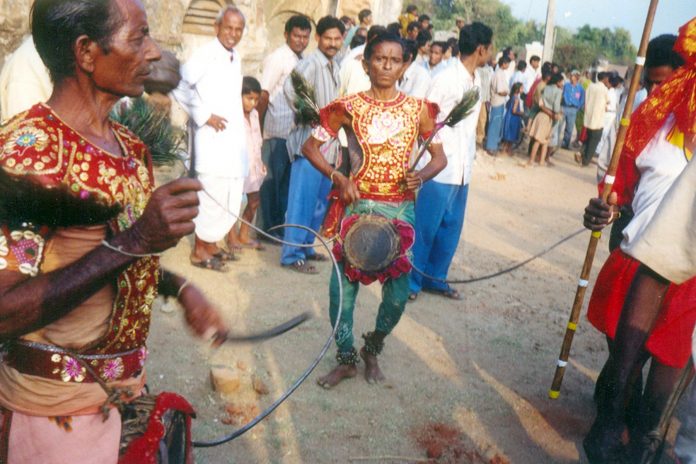age baja pachhe raja
Music is an inevitable part of life like songs. In traditional life, music is not performed for entertainment but in rite rituals also. Ganabaja or dulduli baja has a great role in the traditional life of Odisha in every way. In every rite ritual including marriage, ganabaja has its age-old position though nowadays we could see the modern form of band music is used in some marriage events.
Ganabaja is performed by people of gana, dom, or pāna community not only in western or southern parts but other parts of Odisha also. The music is played not only during the marriage but also during death.
The bājā performed on the occasion of death is called marhābājā because in this case only one rhythm marhāpār is played. Similarly, ganābājā plays an important role in all the rituals of the village festival like bihanchhinā, nuākhāi, dasrā, chaitrā, bhimabasā, khndabasā, suliā jātrā, etc.
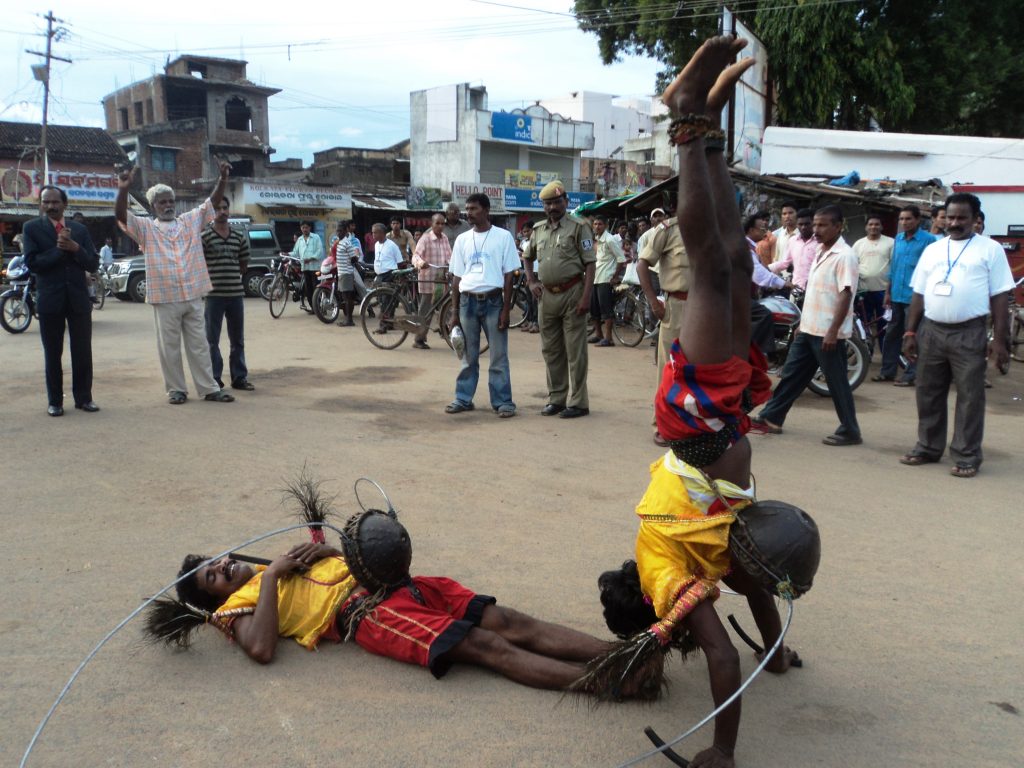
The main instruments of ganābajā are mahuri (is a wind instrument), dhol (drum), nisān or luhuti, and tāsā or tiribidi. The instruments are made by members of the groups only. The ganābajā where nisān which has the shape of a long iron like a horn, is called a singhbājā, and where it does not have this shape, it is called a murribājā.
Murribājā is also known in some areas as dholbājā, dhāpbājā, luhuti or timkidibājā. In murribājā generally, dhol is not used. Sometimes with the help of dhāp, dhol, mahuri, and small nisān or timkidi are used in luhutibājā.
Dhol, tamak, dhāp, etc. musical instruments are made by hādi, bāuri, pāna, and ganā people only. These musical instruments use the skins of cattle, goats, monkeys, cows, and frogs, etc., so members of other groups (people from upper castes) other than ganā and some tribal groups generally do not want to play it. Similarly, the tribal people also make their musical instruments.
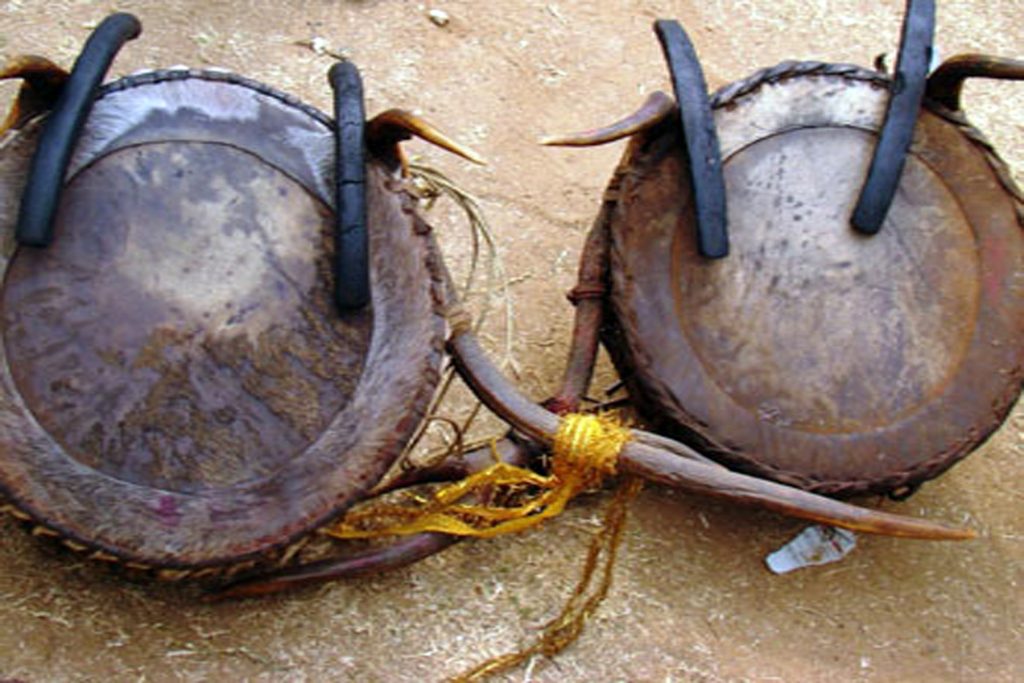
For example, the dungdungā of the Parajas, the kirkisā of the Durua, the dhaāp of the Kandh’s, the regregā of the Saura, the mādal of the Gond, Saura, and the Santals are made only by the members of the respective groups. In different parts of the undivided Koraput district, tribal music is also known as desiā bāida or the county music.
Among the musical instruments in the tribal group are dungdungā (Kandh, Parja, Gadaba), ramgutā (Gadaba, Paraja, Omanatya), dhudki (Saura), mujra (Bhatra), gununku (Banda), shingā (Banda, Didayi, Kandha, Durua, Saura), bāikundal (Lodha), chāngu (Bathudi, Juang, Pahadi Bhuiyan) are notable.
It is important to mention here that the Juang and Bathudi people are also seen worshiping at certain festivals by placing chāngu in their majāng or the youth dormitory. Similarly, some musical instruments vary in region and group.
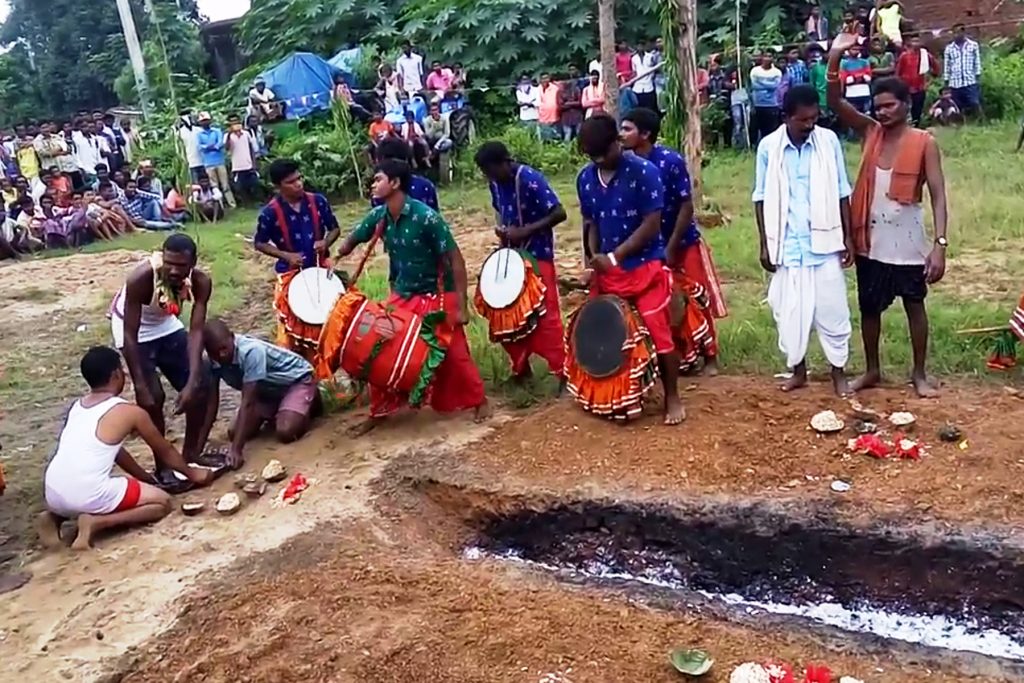
For example, Gond dhol (dumri), Banda and Saura dhol (tudung), Durua dhol (dhola), etc., maintain their uniqueness not only for different names but also in terms of size and type. Similarly, the flute of Kandh, Saura, Durua, Santal also preserves their uniqueness. How the role of music in traditional lifestyles can be inferred from the following sayings:
āge bājā pachhe rājā (bājā in the front and the king is the next).
āge bājā pachhe debtā, pachhe bihā (bājā in the front, the deity is the next).
āge bājā pachhe bihā (bājā is the first in the marriage ceremony).
āge bājā pachhe desaltā (bājā is first, desaltā (other equipages are in the next thing in rituals) is the next.
Ganābājā is performed in all social and cultural activities such as marriage, worship of the deity, dance, in the occasion of death or the performance of death rituals, kanābari (pre-wedding rituals for girls) and so on. Pār the playing style or rhythm of the bājā depending on the event and situation and the needs.
Bihā par (rhythm of marriage), debtā pār (rhythm of god goddesses), nāchani pār (rhythm of dance), marhā pār (rhythm of death) etc. are the traditional taxonomy of the different rhythms. Apart from these, at weddings, there are various styles of music played such as nāchni pār, gansen pār (a rhythm played on the occasion of marriage ritual when bride and groom takes ritual round around the marriage alter), durlānachā pār (dancing rhythm after the gansen), muhunjuā pār (a rhythm played at the time when turmeric powder-oil smeared to bride and bride groom by female members of their family at the marriage altar), parghen pār (a rhythm played at the time of formal inviting ritual of bridegroom by bride family and members), dāl bahalen pār (post-marriage ritual where floating of the branches takes place in a nearby river or pond), chaultiken pār (a ritual of marriage to smearing turmeric powder-oil-rice on the forehead of bride and bride groom), binki pār (rital of striking rice by bride and bride groom to each other), and lagan (event of tying knot) pār. Similarly the marhā pār is also known as called the marhā nisān because in this occasion only one style is played.
A pār is also played at different levels, such as chagen, dhār, utren, muden, chiden, udān, badhen, lasa, kuti, māthi, basen, and thumkel. The method of picking up a piece of music at the beginning of a song is called chaghen.
Various musical instruments are played one by one before playing a certain par, and the sound that occurs when one comes to a direction is called a chaghen.
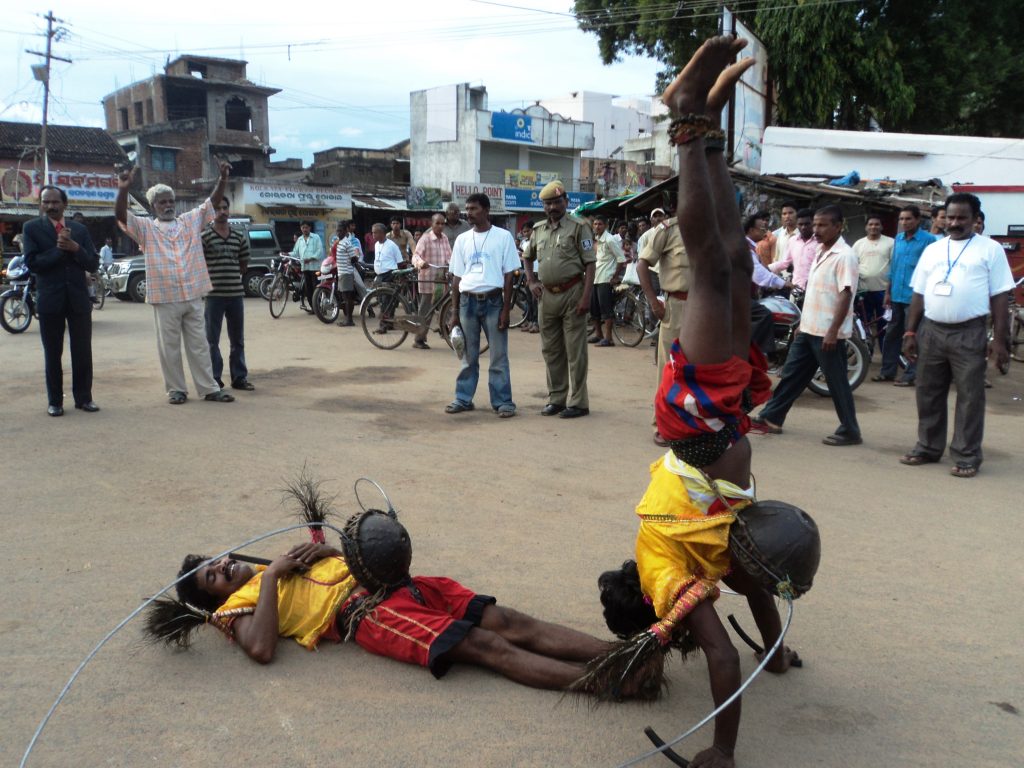
From the beginning, the sound of the mahuri, nisān, tāsā, dhol takes a certain rhythm is known as dhār dharbā means the initial movement of rhythm. Similarly, the music is played only after one verse is sung is known as kāten. Noticing the style of the song, mahuri played accordingly.
When the music covers the end of antarā of the song, the rhythm of the mahuri returns to the antrā. This sudden change in music is called muden. The final landing of the rhythm is called the utren and the end is chiden. Sometimes the rhythm whether it is dancing or playing at a fast pace it is known as udān.
In the same way, increasing the number of kāten is known as pārbadhen or increasing the rhythm. Playing slowly musical instruments is called lasa. Correspondingly, playing occasionally in between two sessions is known as kuti, and being stable of the musical tune is known as māthi.
In the case of dance performances, the style of the dance is often changed, in which case the drummer also softly strikes the drum. This style is called basen. Thumkei is usually the music played at the time of dance of god goddesses.
It is noteworthy that in the case of gods and goddesses dance there is also a rhythm known as patri ochhen pār, bharni pār, or boel pār to invoking the god goddesses which are different for different god goddesses.
(The views expressed are the writer’s own)
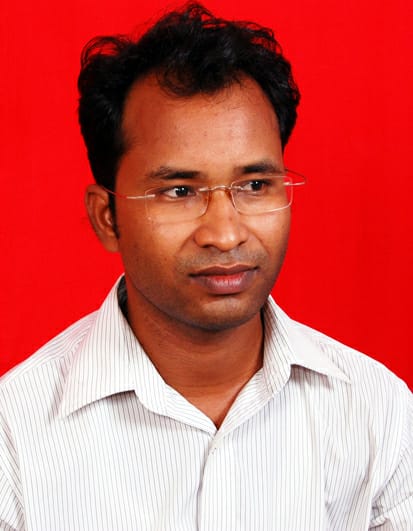
Dr.Sanjaya Kumar Bag
Koksara, Kalahandi, Ph.D. on folklore studies from the Department of Modern Indian Language and Literary Studies, the University of Delhi. Presently he teaches Odia in the Eastern Regional Language Centre, Bhubaneswar, Odisha.

